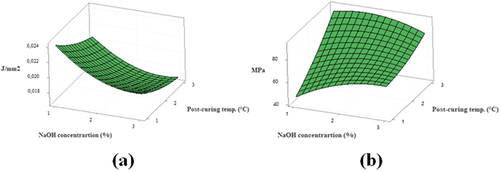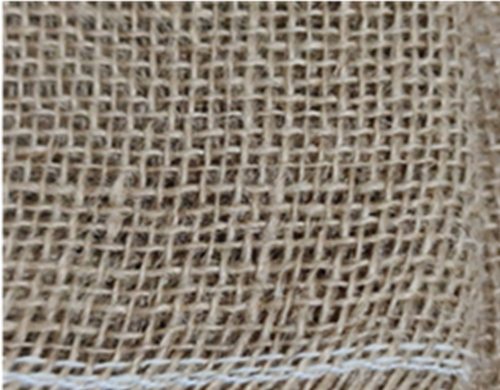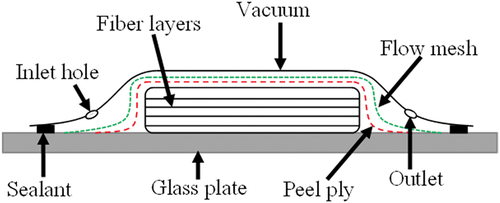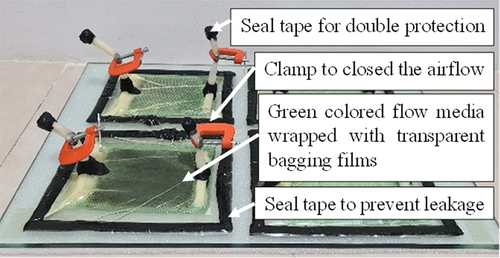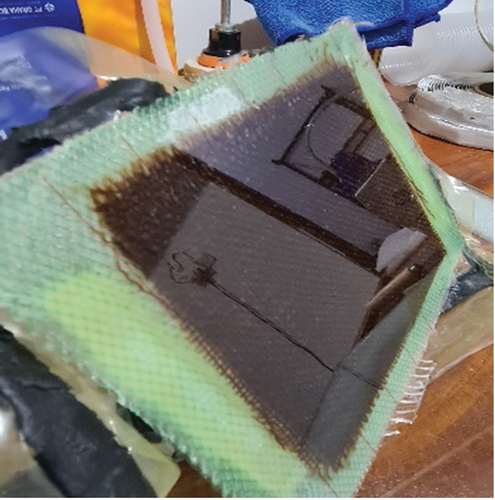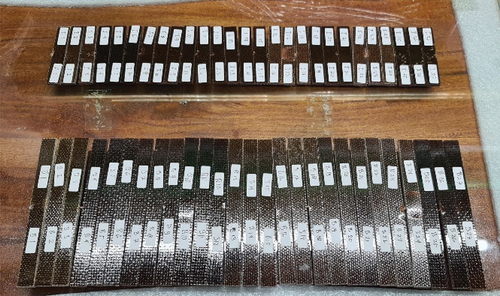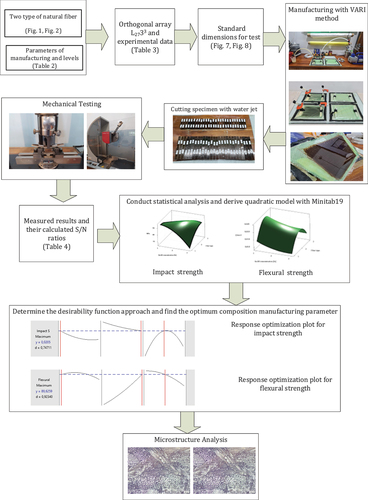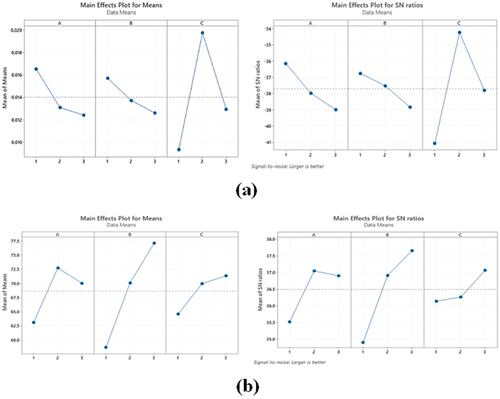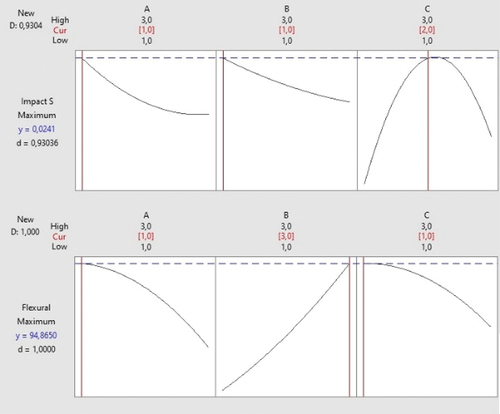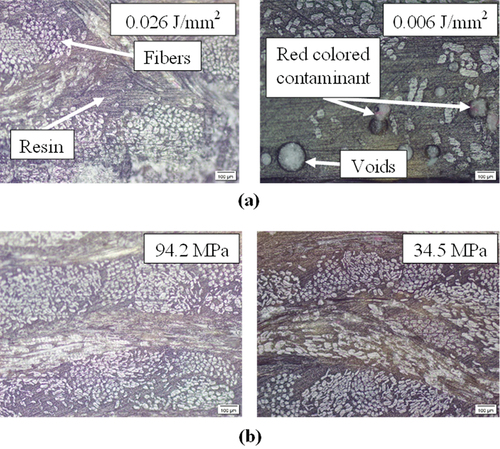Figures & data
Table 1. Bisphenol-A epoxy resin property.
Table 2. CMNFR fabrication parameters.
Table 3. Design matrix of orthogonal array L273 for the experimental runs.
Table 4. Mechanical strength of CMNFR.
Table 5. ANOVA analysis of impact strength and flexural strength.
Table 6. CI calculated confidence interval.
Table 7. Comparisons of results of the experimental and Taguchi predicted value.
Table 8. ANOVA analysis of impact strength and flexural strength.
Figure 10. 3D RSM plot of the strength of natural fiber composite materials: (a) NaOH vs. post-curing temperature for impact strength; (b) NaOH vs. post-curing temperature for flexural strength.
